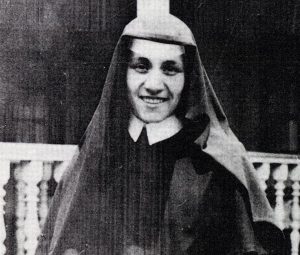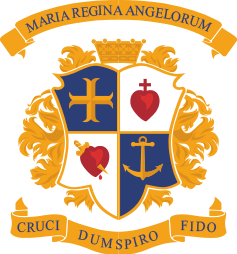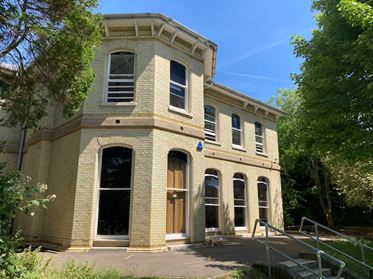The History of Loreto
Loreto College was founded in St Albans in 1922 by members of the Institute of the Blessed Virgin Mary.
The IBVM is a religious order of women founded by a Yorkshire woman, Mary Ward, in the seventeenth century, for the “care of the faith” of Catholics in England. Since 1609, Mary Ward’s Institute has spread all over the world: Loreto schools are to be found in England, Wales, Ireland, Gibraltar, Spain, Australia, Africa, including South Africa, Mauritius, India, South America, Canada and the U.S.A. For more details on the Loreto network, click here.
The order’s most famous teacher is Mother Teresa, canonized in September 2016, who taught religious Studies and Geography at the Loreto Convent in Calcutta for 15 years before being appointed its Principal. For more on her life and her connection to Loreto, click here.
When Loreto College opened in St Albans, it was the first school to provide a secondary education for local girls. Since then it has made a considerable contribution to Catholic education in the city and surrounding areas. It has changed character several times over the years, in 1978 becoming a comprehensive school for girls, with an open Sixth Form.
The School Chapel
The site is a pleasant mix of old and new buildings set in landscaped gardens of considerable interest. The school was initially established in a townhouse known as ‘The Elms’, which now forms part of the Teresa Ball Building. In recognition of this, as part of our centenary celebrations, our Sixth Form Centre has been renamed The Elms. St Joseph’s, now housing the Psychology and Modern Foreign Languages departments, is a large house bought in 1923 from Samuel Ryder, the seed merchant, founder of the Ryder Cup, and former mayor of St Albans.
St Joseph’s
The 1930s saw the building of the Chapel and what are now the Library and the History, Geography, and C.D.T. department areas. In 1959 the Main Teaching Block was added and this now provides facilities for Science, Mathematics, ICT and Textiles. A new block was built in 1969 for the Canteen and dining room, with a further Science Lab and Food Technology room above. More recently the Music and Art departments and two further Science Labs were added. The main Administration area was built in 1981. The school has since taken over what was the Convent, and this now houses staff offices, the NVQ and Sixth Form areas and Classics department. More recent additions include a purpose built gymnasium, erected in 2000, and the opening of Hurstlea in September 2002: this now houses the Religious Education and Learning Support departments.
In September 2009, the Mary Ward building was opened. This stands on the footprint of Landau and Fontainebleau mobile buildings and houses the English Department.
The Mary Ward Building
The buildings themselves thus reflect the steady development of the school over the course of more than one hundred years, from its original seven pupils in 1922 to the current average of just under 1000. With an adjoining hockey pitch, and courts for tennis and netball, the school provides an attractive environment for both study and recreation.
Mother Teresa & Loreto
20th Sept 2016 – Everyone will be aware that Mother Teresa was canonized at the start of this month.
This brought particular joy to the Loreto sisters as they celebrated the achievements of this incredible woman who originally joined the Loreto convent in Dublin in 1928. From there she was sent to Calcutta in 1929. After her Profession of Vows was missioned to Loreto Convent Entally (in Calcutta), she taught Religious Studies and Geography there for fifteen years before being appointed Principal.

Mother Teresa as a Loreto nun in India.
On a train journey to Darjeeling in September 1946, Mother Teresa heard the voice of God telling her to go out into the slums of Calcutta to serve him by tending to the poorest of the poor. She left the Loreto sisters and formed her own order, The Missionaries of Charity.
Pope Francis has declared that St Teresa defended the unborn, sick and abandoned, and shamed world leaders for the “crimes of poverty they themselves created”. Her life reflects the type of Church that Pope Francis is keen to build: one that shows mercy to all and offers practical help for all those in need, especially the poor.
Mother Teresa’s ties and friendship with the Loreto order remained strong, and she frequently visited Loreto communities, particularly in Calcutta. Many of the orphaned babies she rescued subsequently attended the Loreto school where Mother Teresa herself had taught.
On the 150th anniversary of Loreto’s foundation in India, Mother Teresa wrote that “Although now I am a Missionary of Charity, deep down that Loreto joy is still there. Nothing can separate me from the love and gratitude I have for Loreto; what I have received will never be forgotten.”
After her death in 1997, Mother Teresa was buried in the Loreto convent Chapel in Calcutta. People who knew her during her years in Loreto found her a pleasant, happy woman with a good sense of humour. She was enthusiastic and diligent, but more than anything she was a woman of deep faith and prayer, and she remains a source of inspiration to us all.
More on Mother Teresa’s connections with the Loreto Order can be read here.







